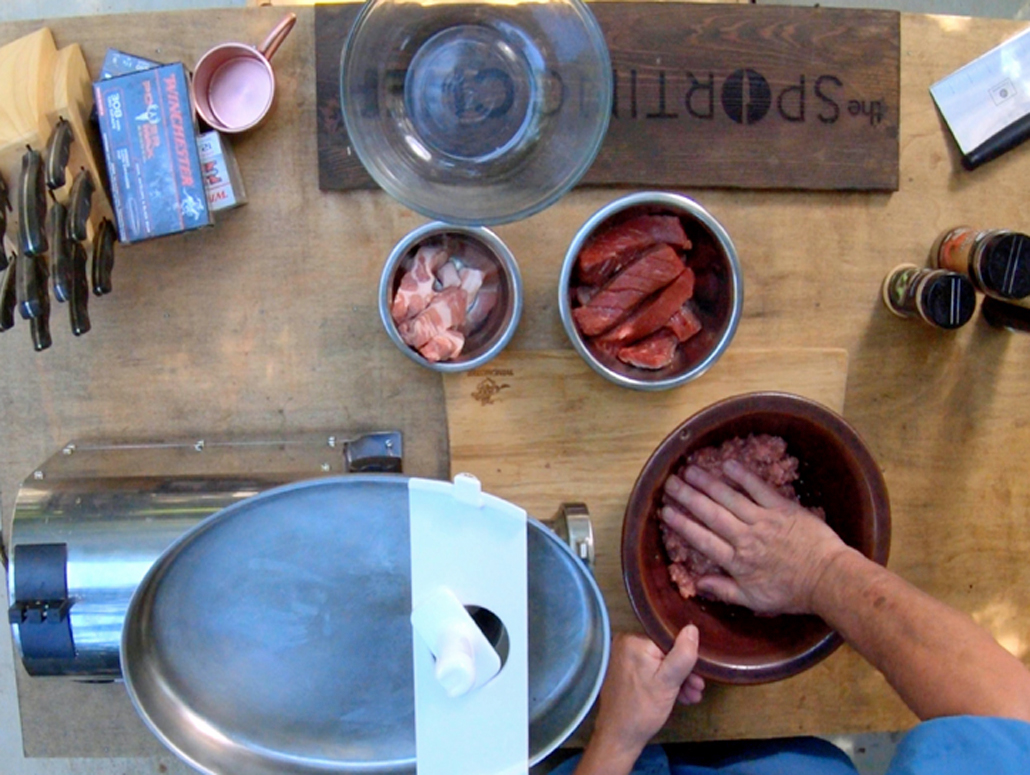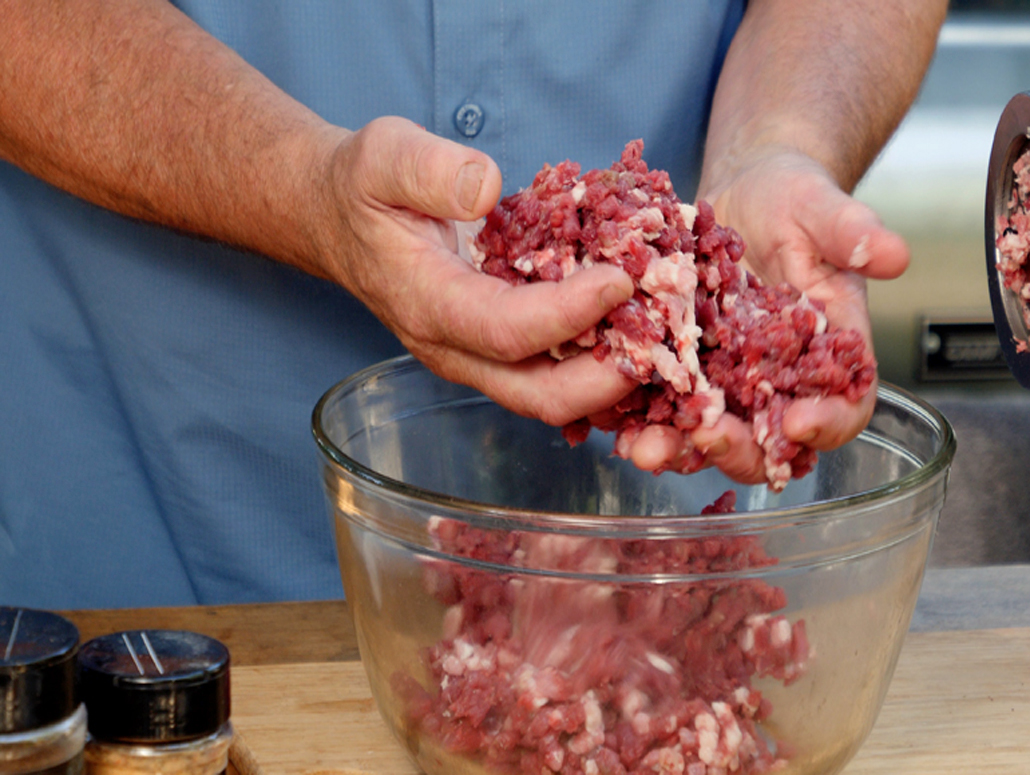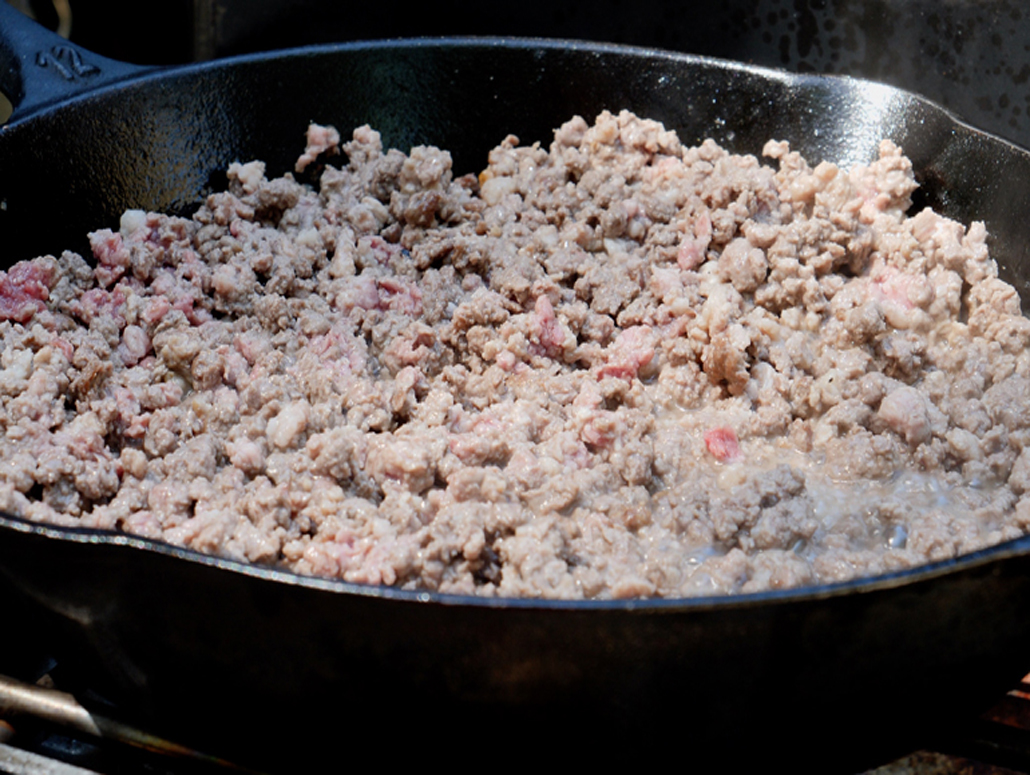How is Your Ground Game? And We're Not Talking Football
“Just save the tenderloins and backstraps and grind the rest into burger.”
The statement above is heard all too often by processors across the country. I supposed that many of us who drag home antlered-game just don’t know what to do with the “other parts”. From the processors we get annoying packs of butterflied backstrap “steaks,” two little tenderloins and a boatload of ground meat and sausage. Neck and shoulder roasts? Negatory. Shanks? No thanks.
It’s good to know what to do with the parts of our game less eaten. Whole neck and shoulder roasts, shanks and some of the tougher cuts from a mature male animal can be slow-cooked, braised or stewed until tender. Handled properly and not overcooked, some of the more choice cuts from the hindquarter can be as tender as most backstraps. Trimmed of anything that’s not muscle, cooked until medium-rare and sliced across grain and a venison or elk top round steak can be tender and delicious. It seems a shame to turn it all into burger, but I know that the grinders will still be working overtime this season.
While we traditionally think of antlered critters when it comes to ground game, pretty much any game meat can be ground into burger. Late and early season conservation goose hunts produce tons of breast fillets that can be ground into burger for sausages, chilis, meatballs and, well…burgers. And while lean ground game is fine for some, I prefer to add some fat to the grind. Bacon ends and pieces work well, but I’m partial to pork shoulder. Don’t trim the fat. Just cut it into grinder-friendly pieces and add it to the grind with duck or goose breasts, upland and antlered game.
In my opinion, freshly ground meat tastes better than ground meat that has been frozen in little packages or patties for several months. I prefer to save my trimmed antlered game in frozen vacuum-packaged chunks and grind to order or grind enough to get me through the week. When making burgers, I use a burger press so that the burgers are symmetrical and cook evenly. I also make several dozen meatballs at a time. After browning, freeze them on a sheet pan before vacuum-sealing. In just a few minutes, I can thaw the meatballs in the microwave or boiling water and add to pasta with a flavorful sauce.
Colder is Better. When grinding any meat, make sure the meat is cold, really cold. Same deal with the grinder parts – chamber, auger, grinder plate and knife. When they’re all cold, you’ll get a better grind. I keep the grinder parts in the freezer and the meat in the fridge until it’s time to grind. Kinda cold meat ground with a room temperature grinder chamber tends to be mushier and mealier than almost frozen meat ground with a super cold grinder.
Bloody Meat. Animals that haven’t been adequately aged tend to be messier than properly-aged meat. When you open a package of ground or whole muscle meat and there is an excess of bloody-looking liquid, that’s got to go. Place the ground meat in a colander and press it down with your hands. For excessively messy ground meat, spritz a little cold water onto it to help eliminate the excess meat juices. After draining, pat it dry with clean cloth or paper towels. Dry meat browns more readily than moist meat that tends to steam as the liquid escapes.
Proper Browning. If you want to brown ground meat for tacos or chili, the finished dish will taste much better if the meat has been properly browned, not just cooked until it turns gray. Well-browned meat has more texture and better flavor than less-cooked ground meat. Add a thin layer of oil to a large skillet over medium-high heat. Once the oil is hot, add the ground meat, but don’t crowd the pan. Let it sit for a few minutes before you start messing with it. The idea is to cook the meat until it turns medium brown. Then give it a turn or two until it is evenly browned throughout.
Good Seasoning. Once browned, add seasoning to the meat. I’m not too concerned with salt drying out the meat when added before cooking. I just find that it’s easy to season after the meat has browned and reduced in volume.
Doneness. When it comes to a burger that’s headed for a bun, I prefer mine medium-rare. How you cook yours is your own business, but if the animal has been handled properly during processing, I don’t worry about whether eating a less-cooked burger will cause any gastrointestinal distress. Some of us were raised on well-done meat and apparently there’s no way we will eat it any other way. I applaud others who have managed to break free from eating only overcooked meat.






